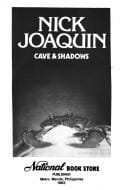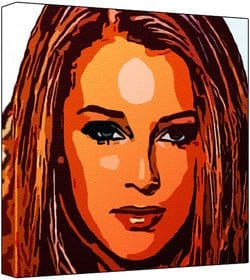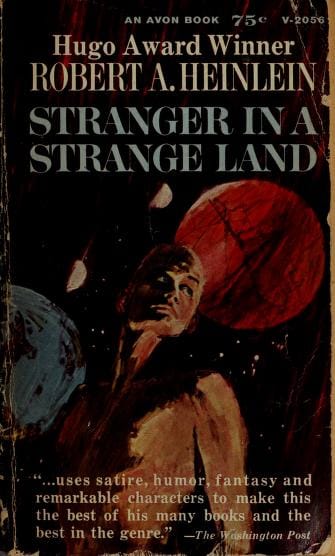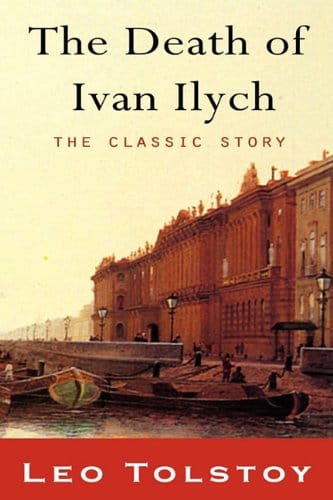Cave & Shadows: Unraveling Nick Joaquin’s Mysterious Masterpiece
Explore Nick Joaquin's novel Cave & Shadows—its mystery plot, themes, and Martial Law backdrop—in this guide for students, educators, and literary explorers.

Introduction to Cave & Shadows
“Cave & Shadows,” the last novel completed by Philippine National Artist for Literature Nick Joaquin, remains one of the most riveting mystery thrillers to emerge from Southeast Asia. First serialized in the late 1970s and published in book form in 1983, the work plunges readers into an investigation of a woman found dead inside a supposedly sealed cave while Manila languishes under Martial Law. More than four decades later, the book’s blend of occult folklore, political commentary, and philosophical inquiry continues to fascinate academics, students, and casual readers alike.
Brief Synopsis Without Spoilers
The story opens with the shocking discovery of Nenita Coogan’s body in a cave on Antipolo’s Mystic Mountain. How she entered a locked cavern and why she was clad in nothing but a white kimono triggers sensational headlines. Retired playboy Jack Henson, implored by his former lover, becomes an unlikely detective. His search for answers weaves through colonial mansions, candle-lit cult rituals, and Manila’s smoky nightclubs, revealing tangled relationships among old Spanish-Filipino clans, American expatriates, and fanatical religious sects. What begins as a simple whodunit evolves into a meditation on identity, faith, and the enduring pull of the past.
Key Themes and Symbols
The Cave as Womb and Time Capsule
Joaquin repeatedly uses caves in his essays and fiction as archetypal spaces where history is preserved. In “Cave & Shadows,” the limestone cavern is both a literal crime scene and a metaphoric womb: a place of origin, secrecy, and rebirth. Every time characters re-enter the cave, they confront earlier versions of themselves and of the nation—Spanish colonialism, American occupation, Japanese invasion, and finally the Marcos dictatorship. The sealed chamber warns that truths buried for convenience will always resurface.
Shadows of Faith and Skepticism
The novel explores the collision between traditional Catholicism, folk mysticism, and agnostic modernity. Jack Henson is an outspoken skeptic, yet he is repeatedly drawn to inexplicable phenomena—dancing lights in the cave, levitating cult members, inexplicable apparitions. Joaquin never provides easy answers; instead, he blurs boundaries between miracle and hoax to highlight how Filipinos use myth to survive oppressive regimes.
Power, Gender, and the Martial Law Gaze
Written during the Marcos era, the narrative scrutinizes how authoritarian power reshapes masculinity and femininity. Male characters attempt to control women’s bodies—through religion, romance, or state surveillance—only to discover that the female dead refuses to stay silent. Nenita’s ghostly presence becomes a feminist critique inside the patriarchal landscape of Martial Law.
Historical and Cultural Context
Understanding “Cave & Shadows” means understanding 1970s Philippines. President Ferdinand Marcos declared Martial Law in 1972, suspending civil liberties and curbing the press. Joaquin, then editor of the magazine Philippines Free Press, witnessed arrests of journalists and censorship raids. By hiding social criticism within the structure of a detective thriller, he avoided direct suppression while exposing the paranoia, cults of personality, and widespread cronyism of the day. The use of Antipolo, a pilgrimage town overlooking Manila, adds another layer, contrasting sacred landscapes with governmental abuse.
Nick Joaquin’s Narrative Style
Joaquin’s prose oscillates between lyrical Spanish-tinged sentences and hard-boiled dialogue reminiscent of Dashiell Hammett. He inserts epigraphs from José Rizal, biblical verses, and 1930s pop songs, producing a collage that mirrors the archipelagic nature of Philippine identity. Flashbacks shuffle colonial centuries like a deck of cards, forcing readers to question linear time. The result is a liminal reading experience that mimics wandering through a cave where one turn reveals a prehistoric petroglyph and the next, a fluorescent tourist sign.
Why “Cave & Shadows” Still Matters Today
With authoritarian tendencies resurfacing globally, Joaquin’s cautions feel prophetic. The novel challenges readers to inspect the "caves" in their own societies—spaces where inconvenient histories and marginalized voices are buried. It also champions investigative curiosity: truth, Joaquin argues, is often occulted by power but can be rediscovered through dialogue and collective memory.
For Filipino readers, the text reinforces that national identity is syncretic, born from Hispanic fiestas, Malay folklore, American jazz, and Asian resilience. International readers, meanwhile, enjoy a gothic thriller that rivals Umberto Eco’s “The Name of the Rose,” making it a gateway to Philippine literature.
How to Get a Copy and Recommended Editions
“Cave & Shadows” is available through Philippine publisher Anvil Publishing, major online retailers, and university libraries worldwide. Seek the 2020 Anniversary Edition, which features an illuminating critical introduction by eminent scholar Resil Mojares and restored passages previously trimmed by censors. Ebook and audiobook formats are also on the rise, enabling diaspora readers to access the text instantly.
Tips for Studying the Novel
- Keep a timeline of historical references; Joaquin’s non-linear chapters can confuse first-time readers.
- Compare the cave motif here with those in Joaquin’s short story “Summer Solstice” and essay “Culture and History.”
- Research Martial Law primary sources to grasp the climate of fear alluded to in the narrative.
- Discuss the portrayal of women with a feminist lens; consider pairing the text with Lilia Quindoza Santiago’s essays on gender in Philippine writing.
Final Thoughts
“Cave & Shadows” rewards patience. Beneath its sensational premise lies a layered critique of how nations, families, and individuals cope with suppressed memories. Nick Joaquin beckons us into the darkness not to frighten, but to illuminate the stories we refuse to confront. Step inside the cave, follow the flickering shadows, and you may emerge holding your own undiscovered truth.



